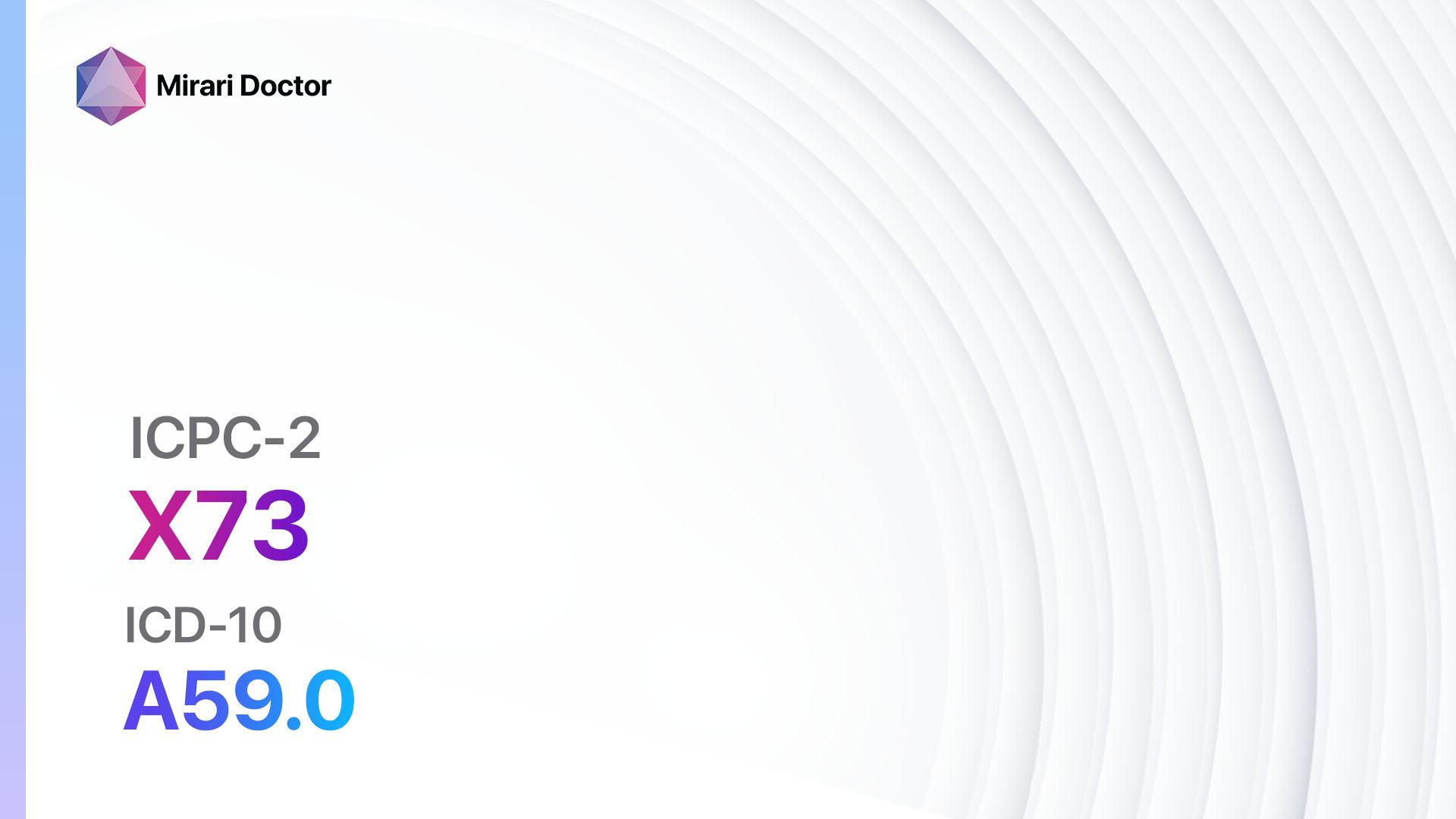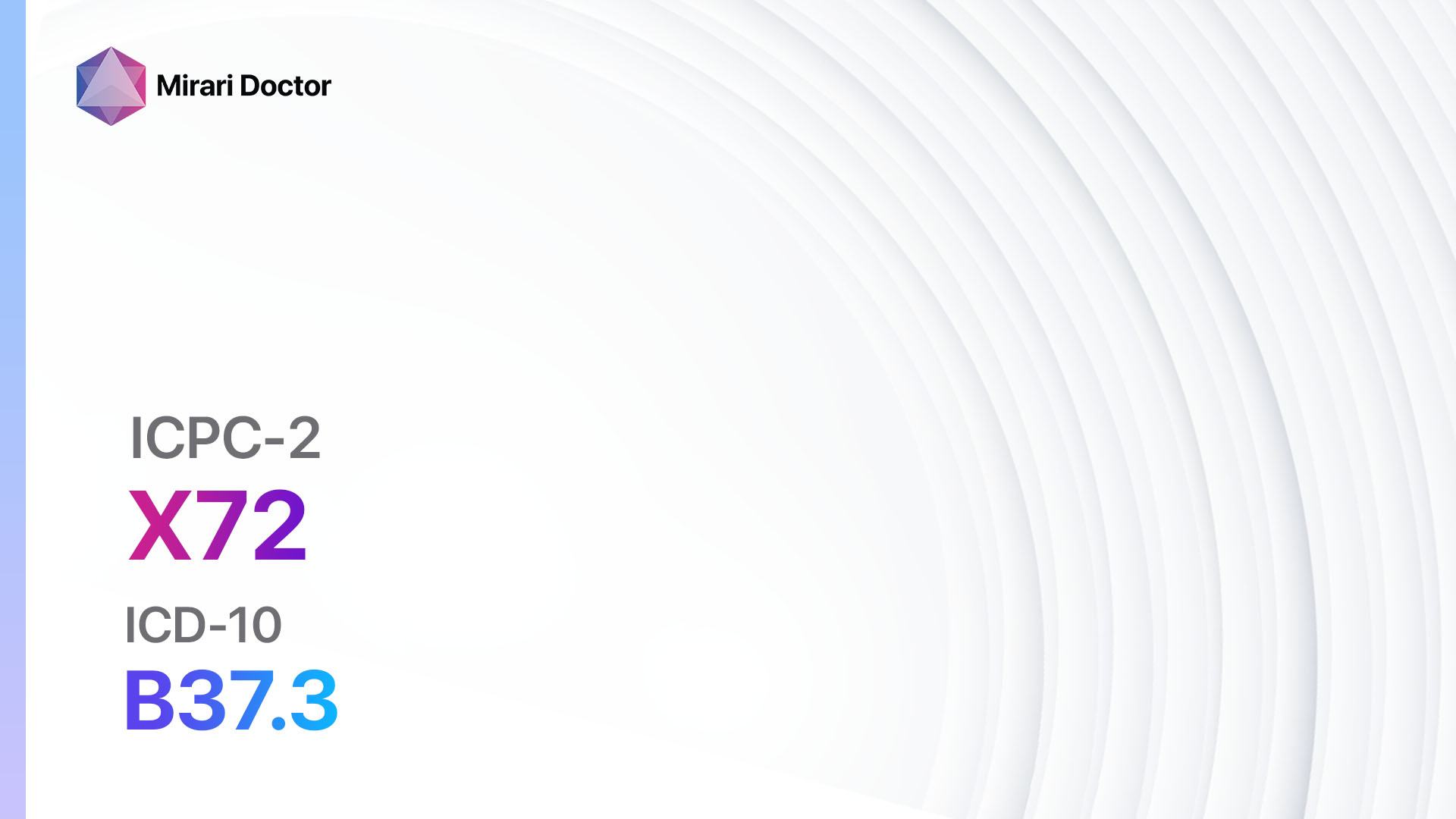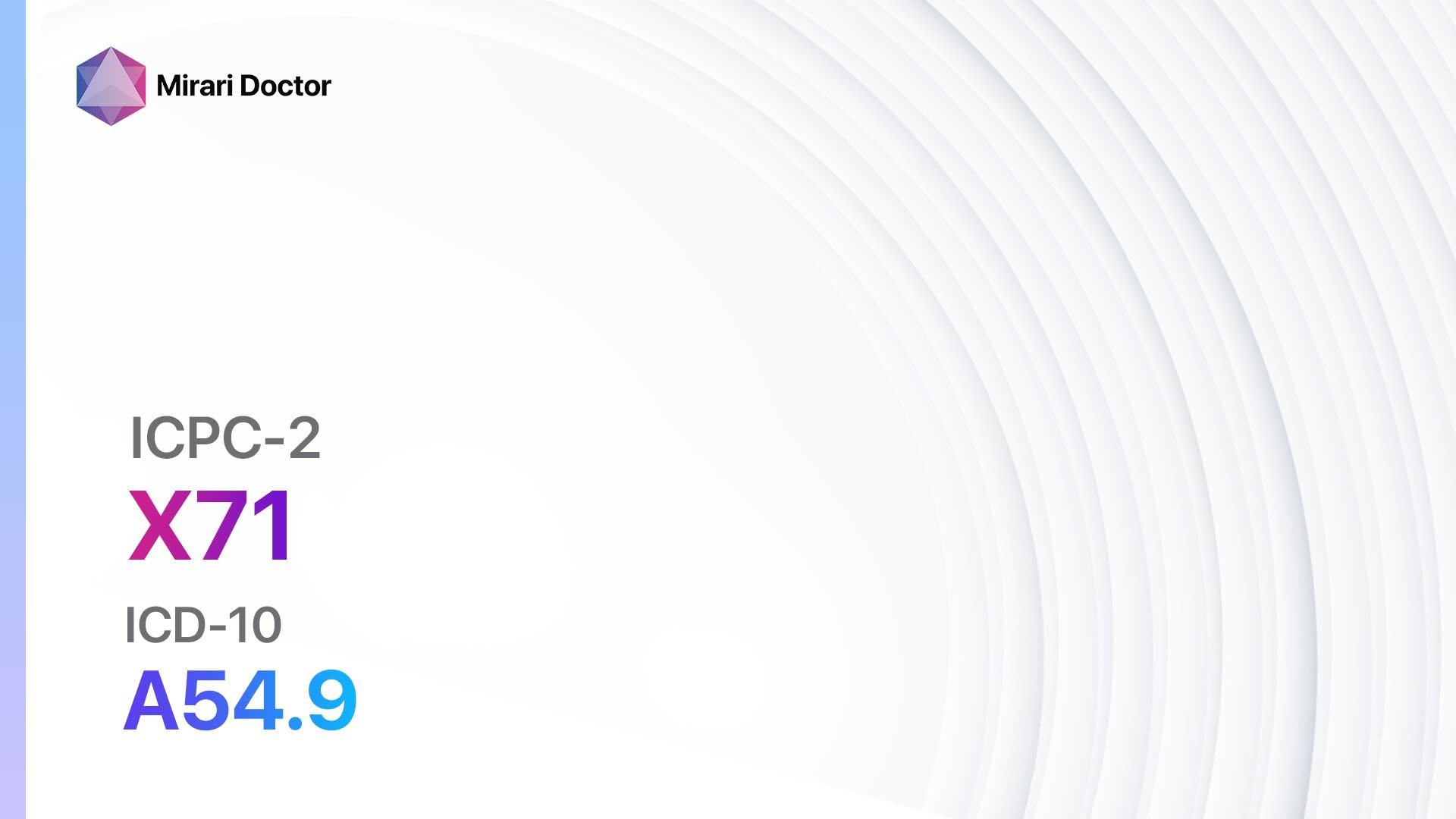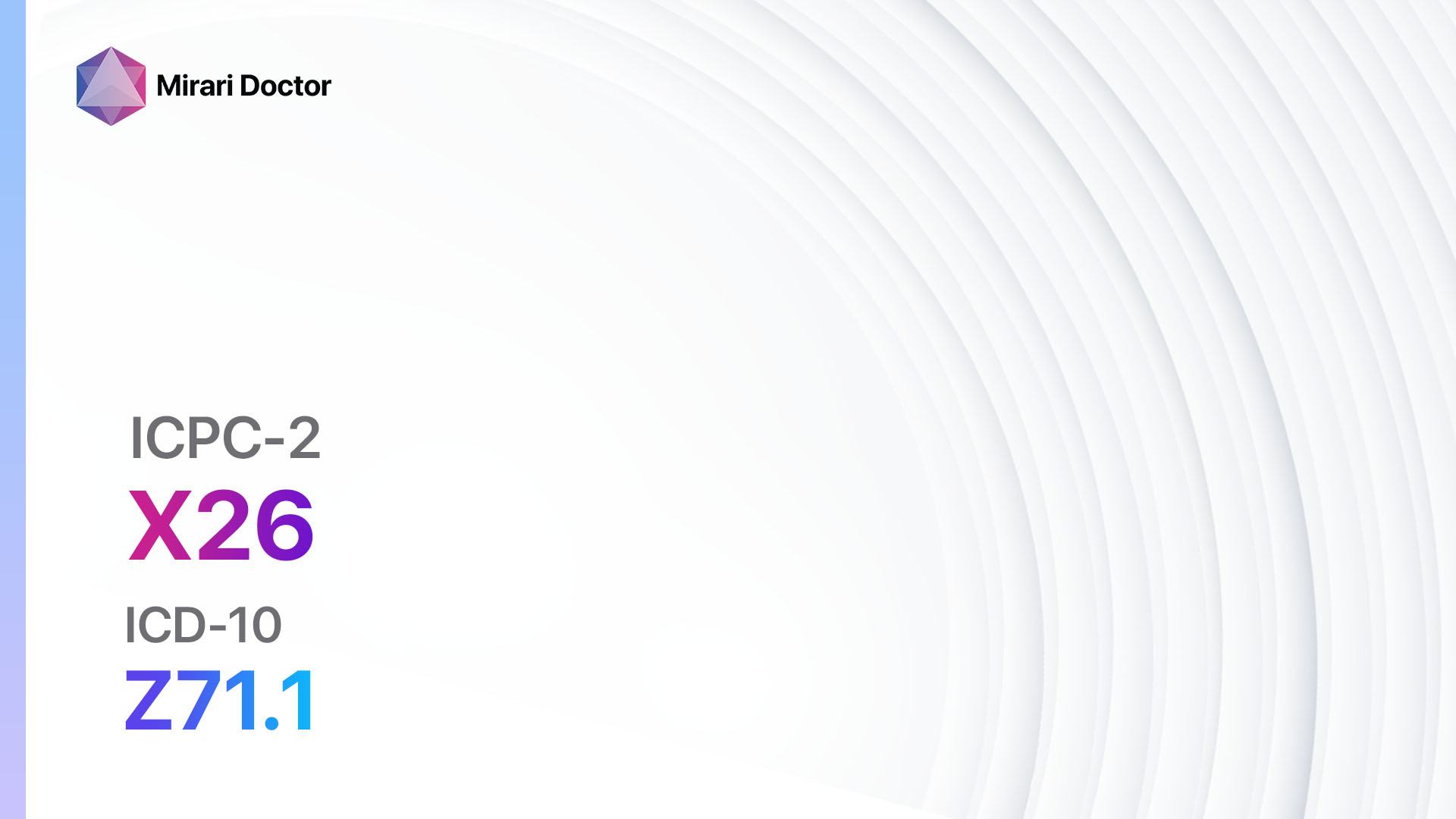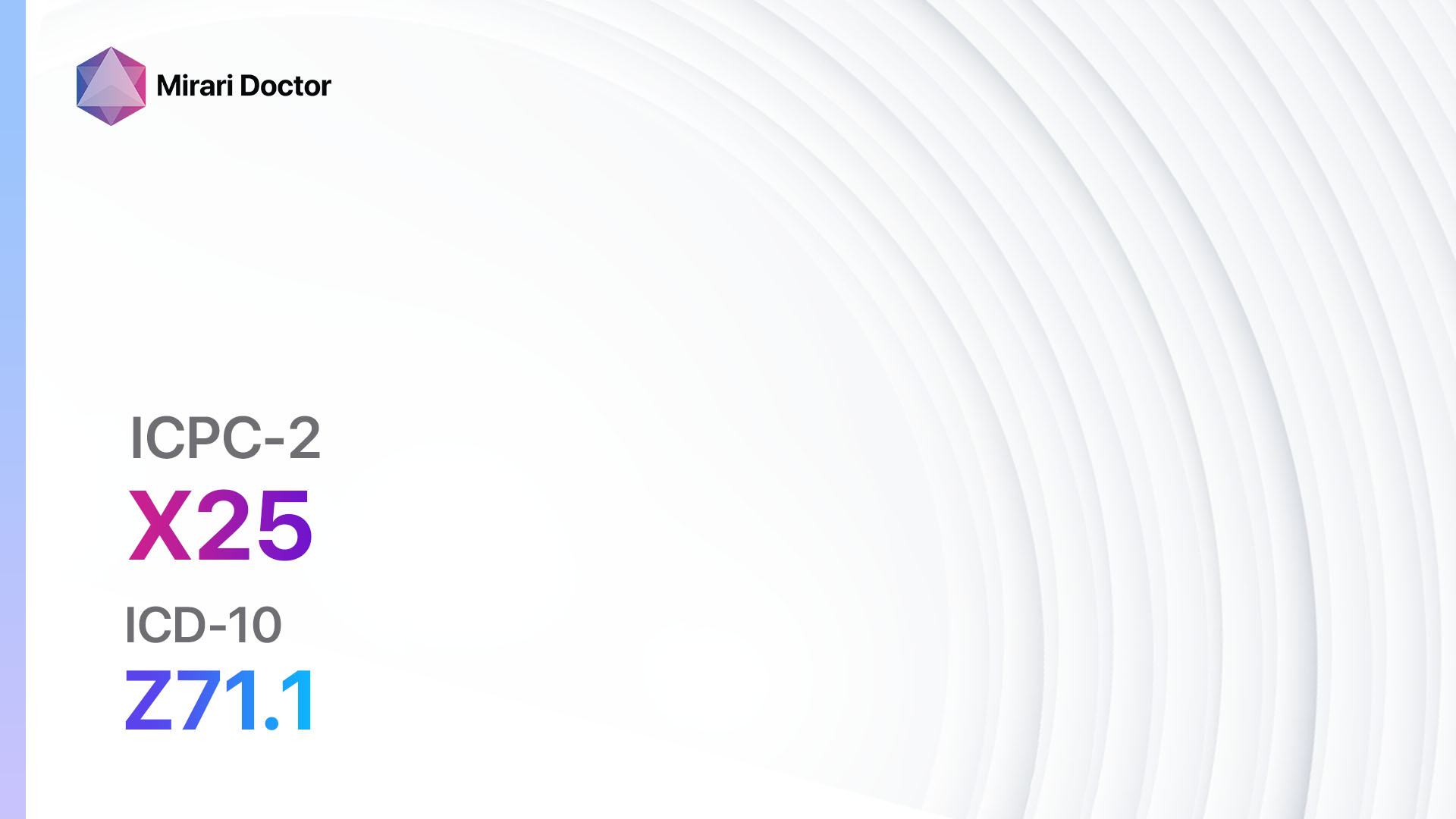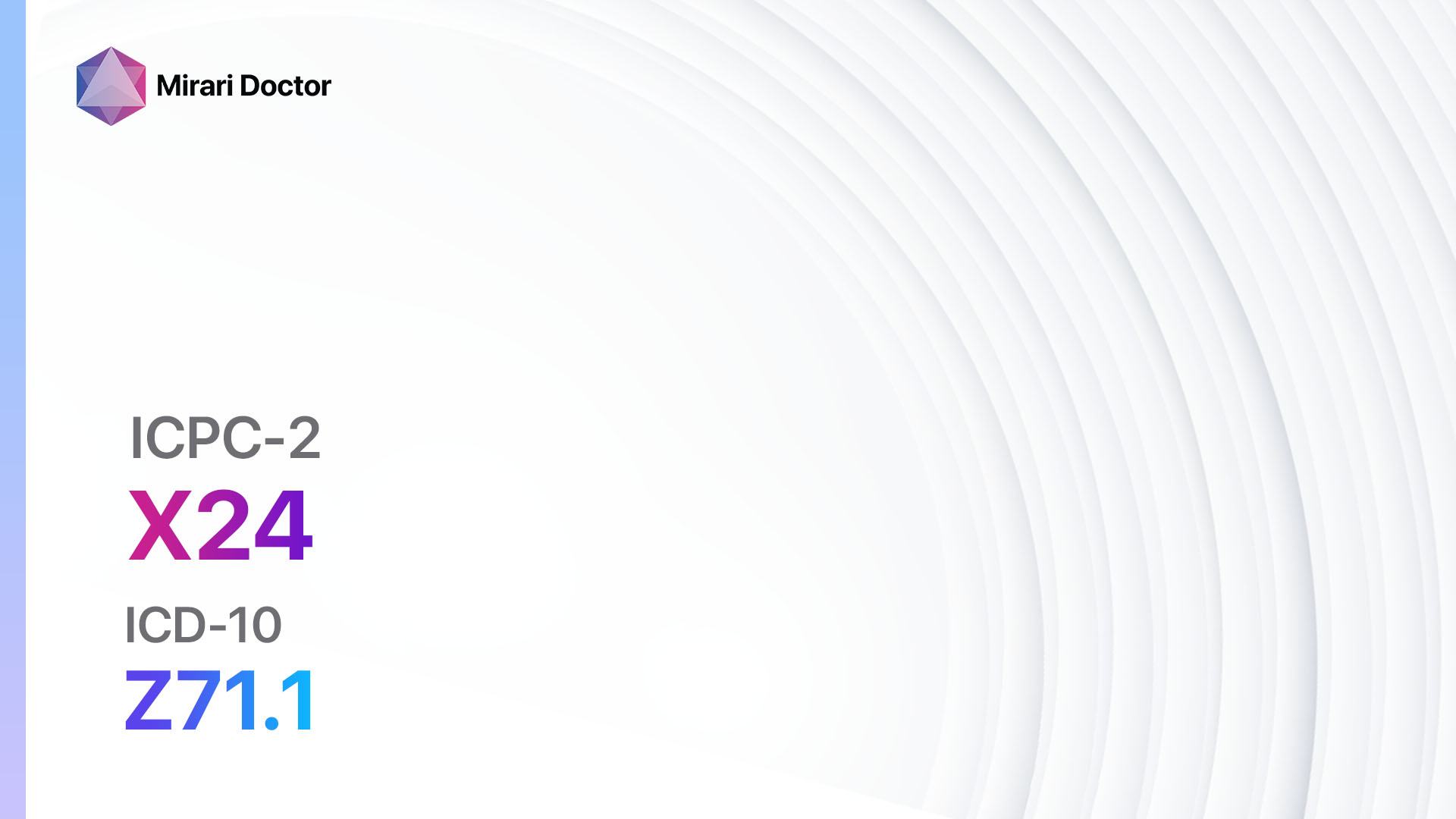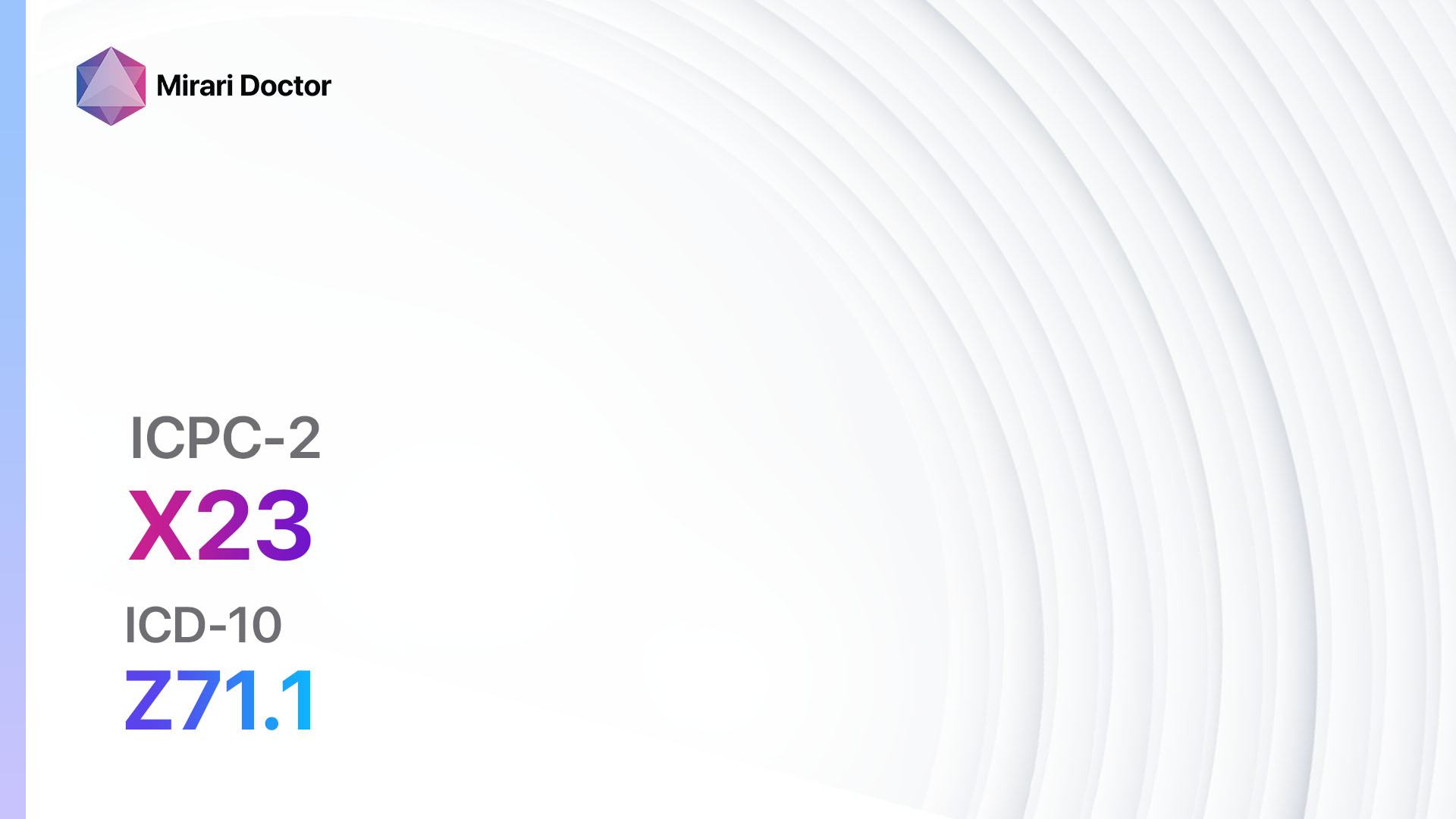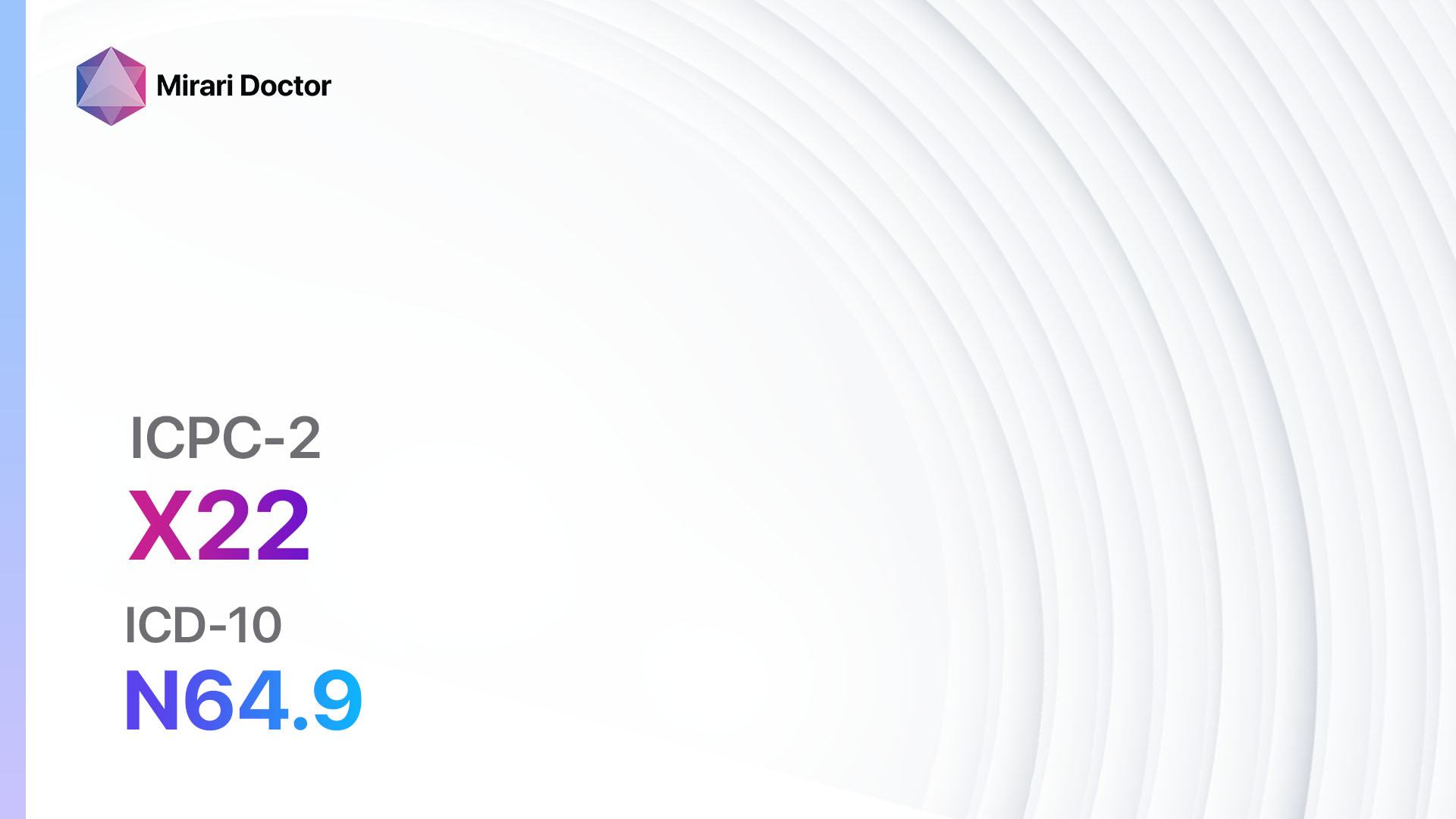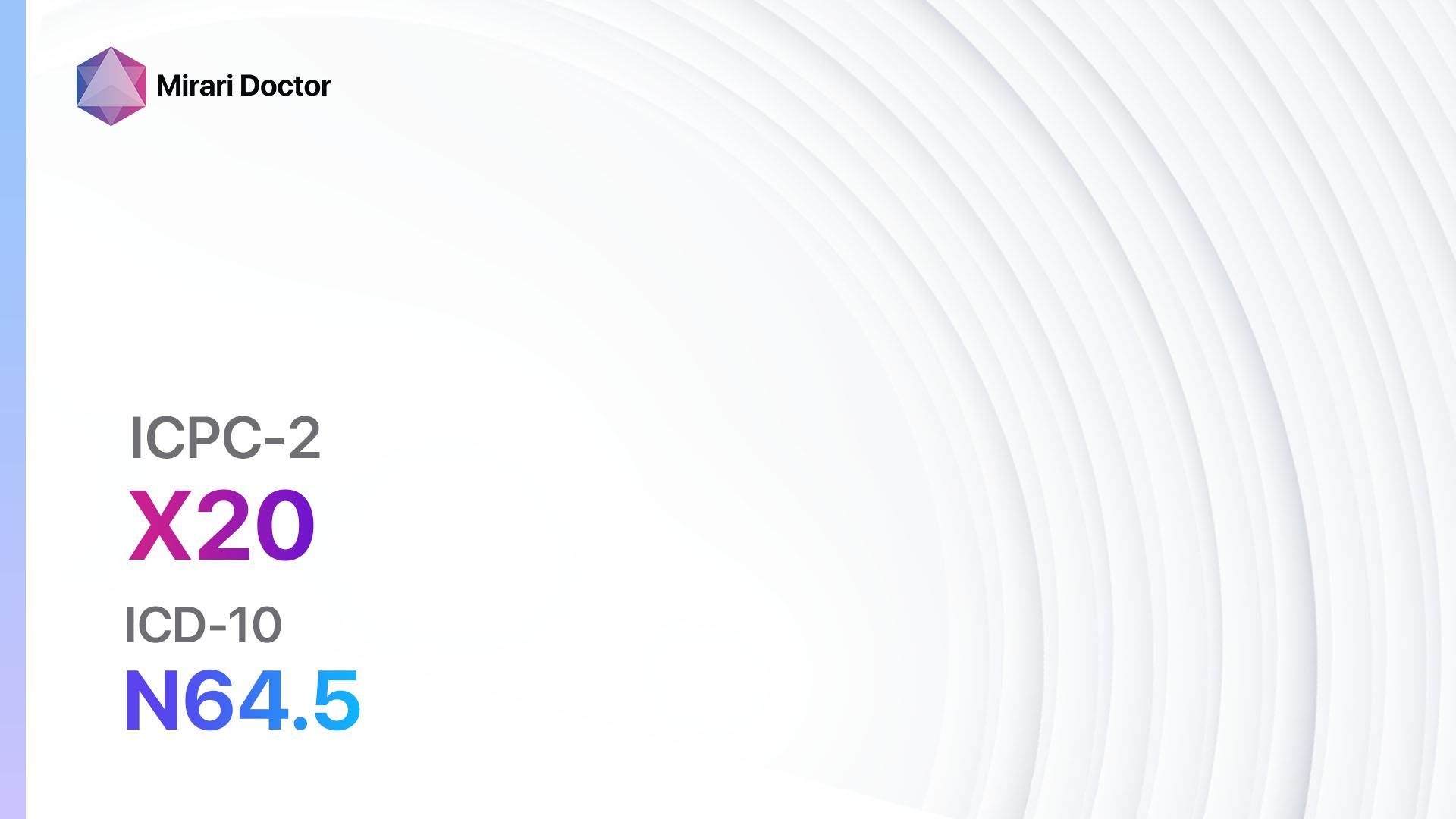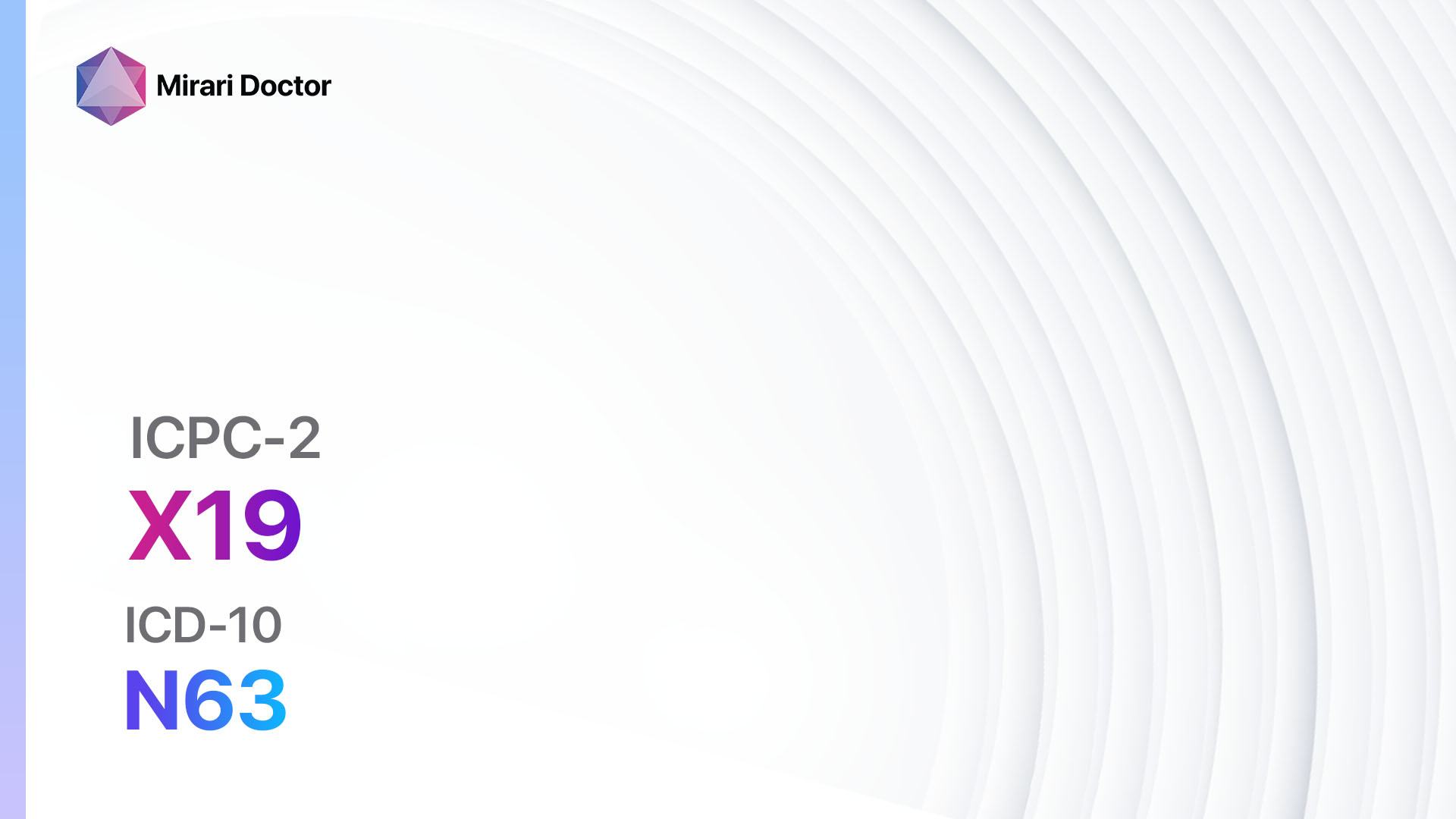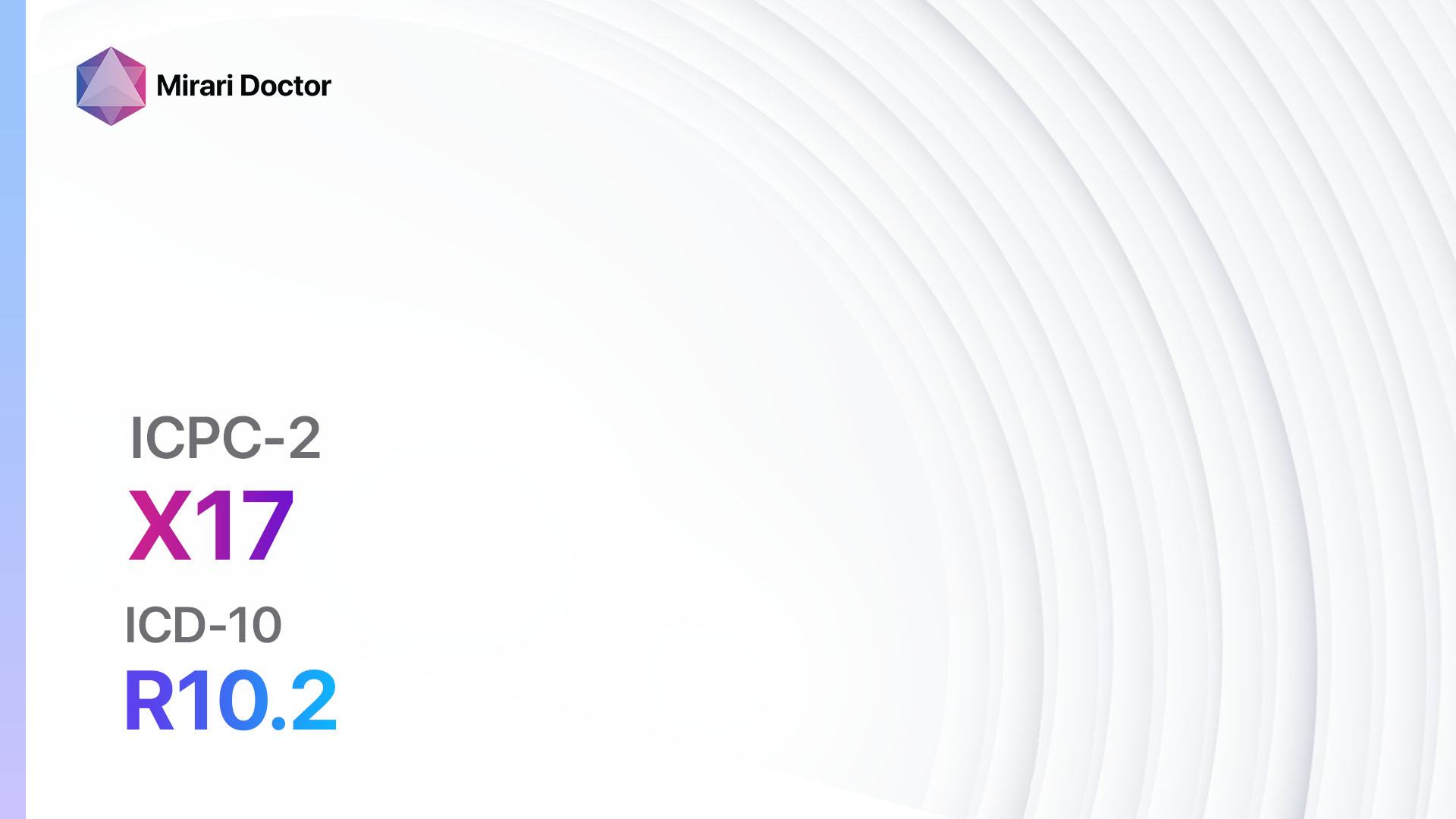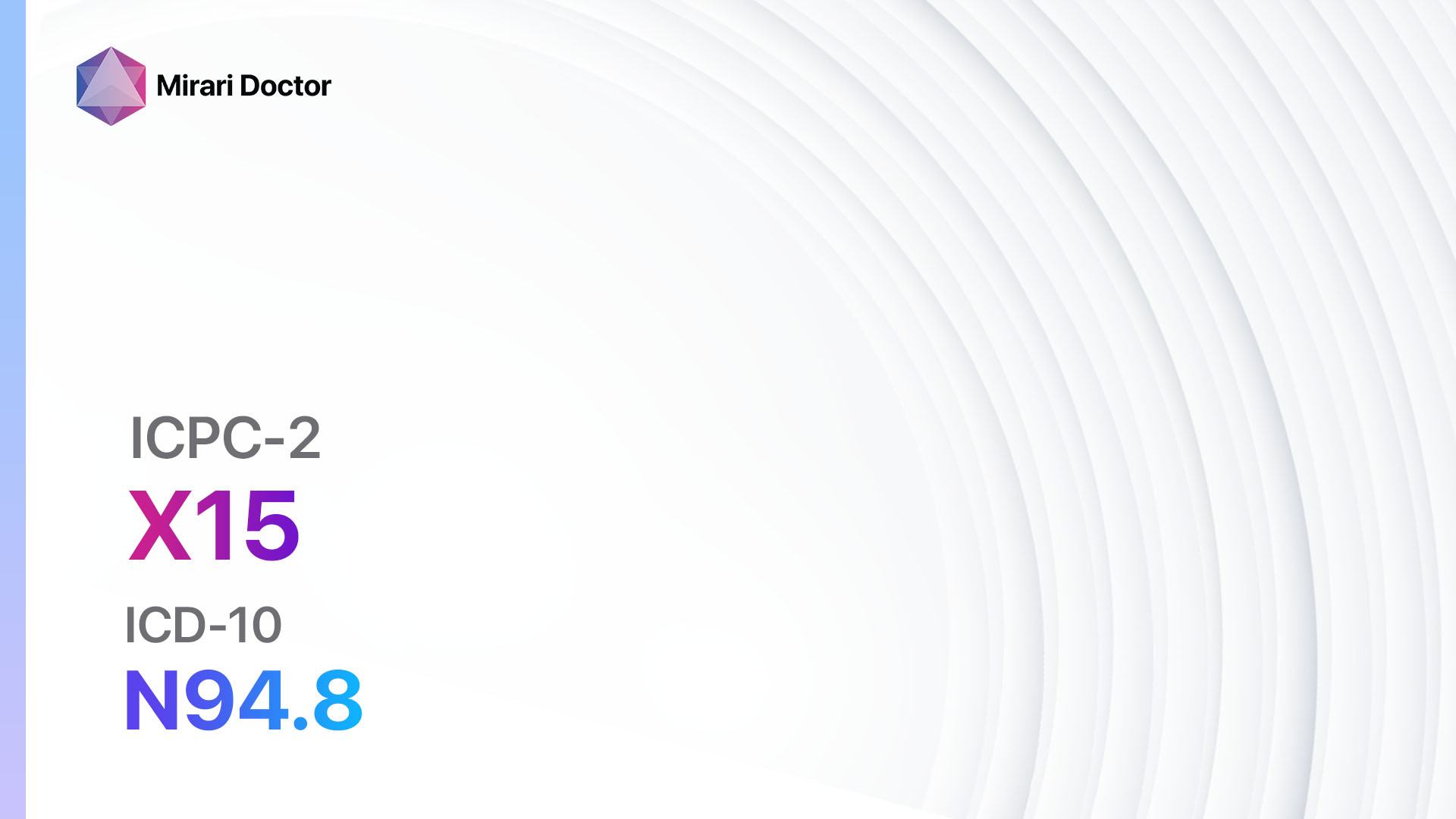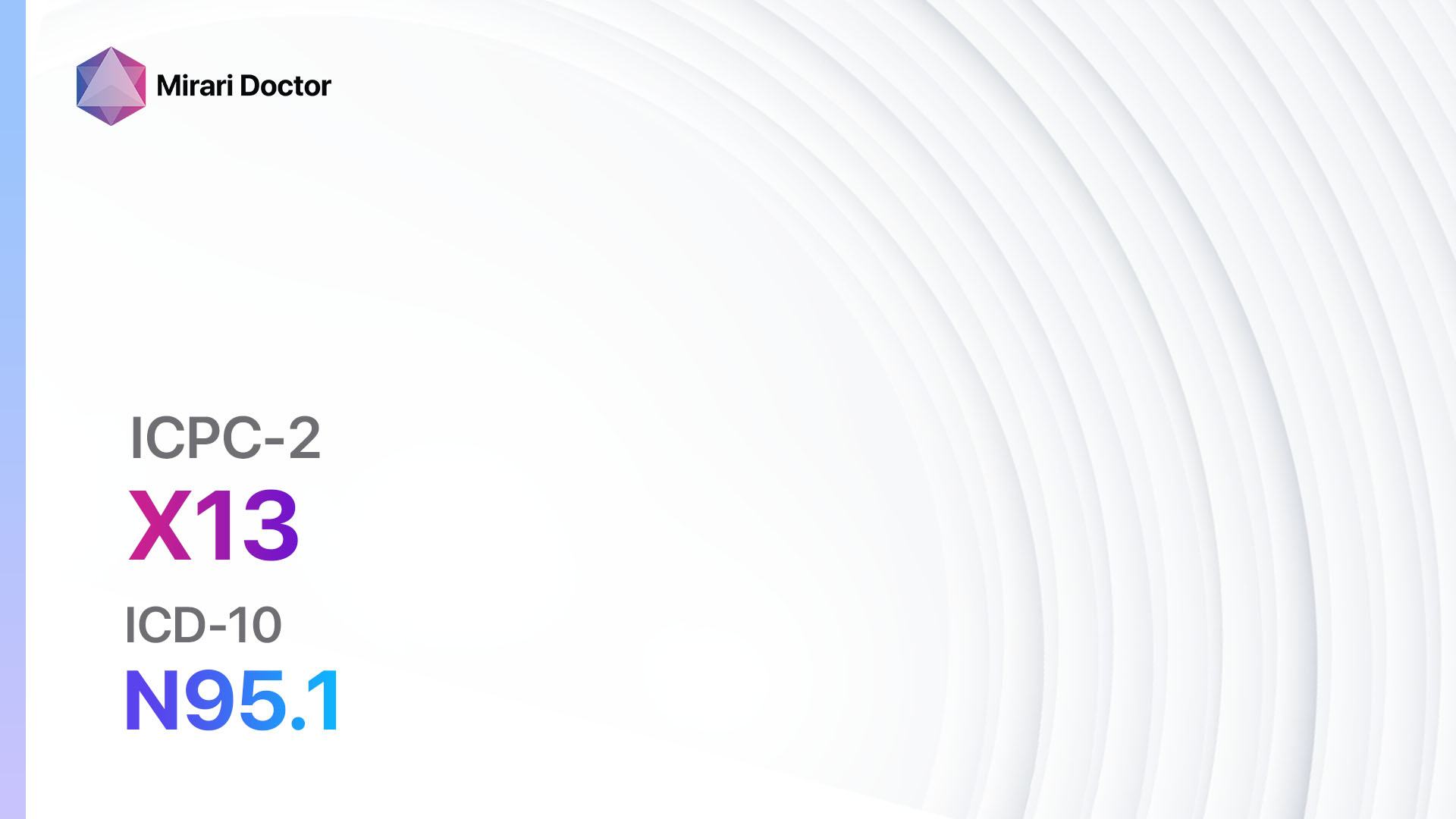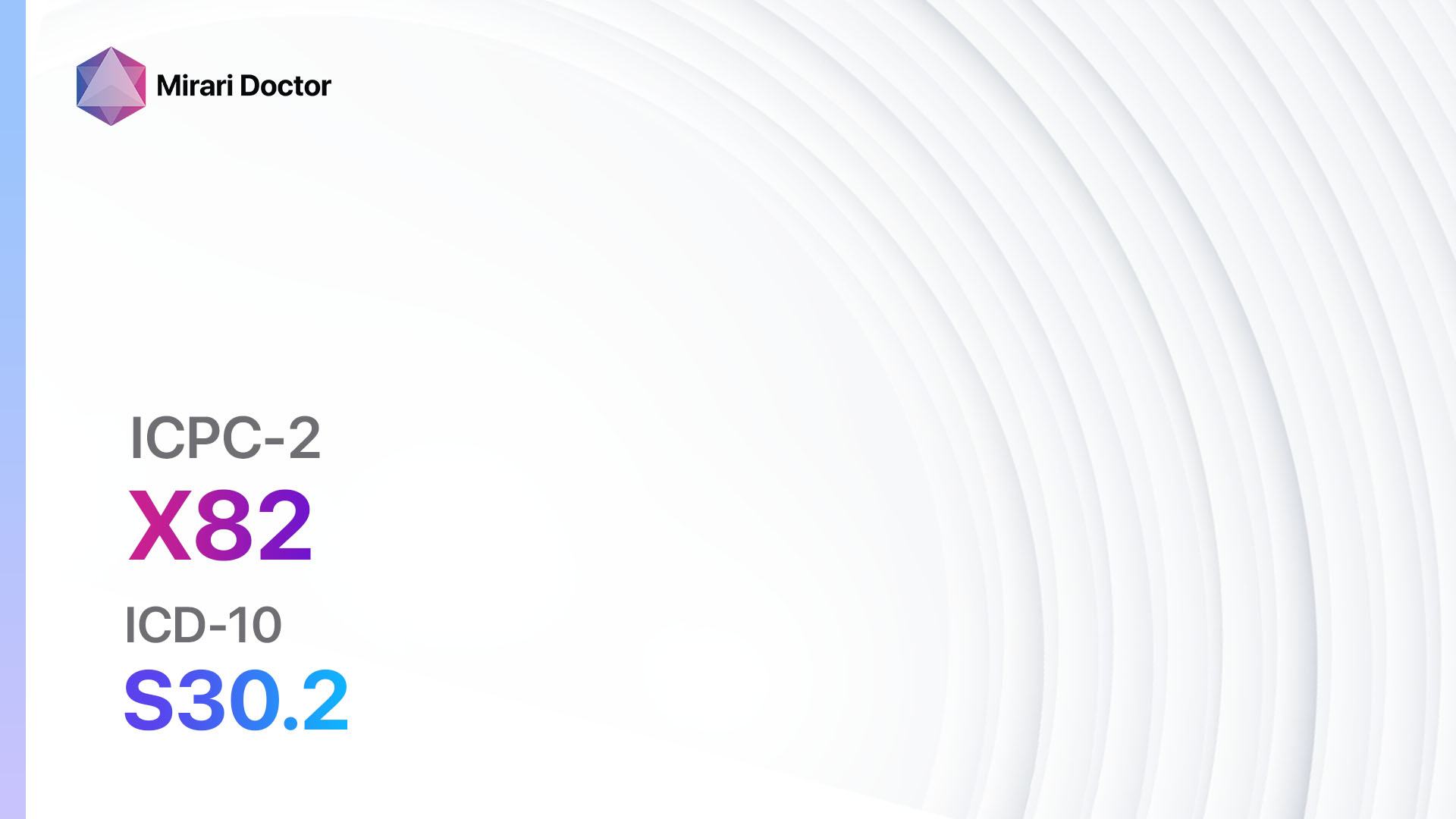
Introduction
Injury to the female genital area can occur due to various reasons, such as trauma, accidents, or sexual assault[1]. It is a significant condition that requires prompt medical attention to prevent complications and ensure proper healing[2]. This guide aims to provide a comprehensive overview of the symptoms, causes, diagnostic steps, possible interventions, and lifestyle interventions for injury to the female genital area.
Codes
- ICPC-2 Code: X82 Injury genital female[3]
- ICD-10 Code: S30.2 Contusion of external genital organs[4]
Symptoms
- Pain in the genital area[5]
- Swelling and bruising[5]
- Bleeding or spotting[5]
- Difficulty urinating[6]
- Painful intercourse[7]
- Abnormal discharge[8]
- Changes in menstrual cycle[9]
Causes
- Trauma or injury during sexual activity[10]
- Accidental injury or falls[11]
- Physical assault or abuse[12]
- Medical procedures or surgeries[13]
- Foreign objects inserted into the genital area[14]
Diagnostic Steps
Medical History
- Gather information about the circumstances of the injury[15]
- Ask about any previous injuries or medical conditions related to the genital area[15]
- Inquire about any symptoms or changes in menstrual cycle[16]
Physical Examination
- Inspect the genital area for signs of injury, such as swelling, bruising, or lacerations[17]
- Palpate the area to assess tenderness or abnormal masses[17]
- Perform a speculum examination to evaluate the cervix and vaginal walls[18]
- Check for any signs of infection or abnormal discharge[18]
Laboratory Tests
- Complete blood count (CBC) to check for signs of infection or anemia[19]
- Urinalysis to assess for urinary tract infection or blood in the urine[19]
- Cultures to identify any potential bacterial or fungal infections[20]
- Pregnancy test if applicable[21]
Diagnostic Imaging
- Ultrasound to visualize any internal injuries or abnormalities[22]
- X-ray or CT scan if there is suspicion of fractures or foreign objects[23]
- MRI for a more detailed assessment of soft tissue injuries[24]
Other Tests
- Colposcopy to examine the cervix and vaginal walls in detail[25]
- Biopsy if there are any suspicious lesions or abnormal growths[26]
- STD testing if there is a risk of sexually transmitted infections[27]
Follow-up and Patient Education
- Schedule follow-up appointments to monitor healing and address any concerns[28]
- Provide information on self-care measures, such as proper hygiene and wound care[28]
- Educate the patient about the importance of reporting any worsening symptoms or signs of infection[29]
- Offer resources for counseling or support groups if needed[30]
Possible Interventions
Traditional Interventions
Medications:
Top 5 drugs for Injury genital female:
- Pain relievers (e.g., Acetaminophen, Ibuprofen)[31]:
- Cost: Generic versions can be $3-$10/month.
- Contraindications: Allergy to the medication, active stomach ulcers.
- Side effects: Upset stomach, dizziness.
- Severe side effects: Liver damage, gastrointestinal bleeding.
- Drug interactions: Blood thinners, certain antidepressants.
- Warning: Do not exceed recommended dosage.
- Topical antibiotics (e.g., Neosporin, Bacitracin)[32]:
- Cost: $5-$15 per tube.
- Contraindications: Allergy to the medication.
- Side effects: Skin irritation, allergic reactions.
- Severe side effects: Rare, but may include severe allergic reactions.
- Drug interactions: None known.
- Warning: Use as directed and avoid applying to open wounds.
- Antifungal creams (e.g., Clotrimazole, Miconazole)[33]:
- Cost: $5-$15 per tube.
- Contraindications: Allergy to the medication.
- Side effects: Skin irritation, burning sensation.
- Severe side effects: Rare, but may include severe allergic reactions.
- Drug interactions: None known.
- Warning: Use as directed and complete the full course of treatment.
- Topical steroids (e.g., Hydrocortisone)[34]:
- Cost: $5-$15 per tube.
- Contraindications: Allergy to the medication, open wounds.
- Side effects: Skin thinning, increased risk of infection.
- Severe side effects: Rare, but may include adrenal suppression.
- Drug interactions: None known.
- Warning: Use as directed and avoid prolonged use.
- Antibiotics (e.g., Amoxicillin, Cephalexin)[35]:
- Cost: Generic versions can be $10-$50/month.
- Contraindications: Allergy to the medication, certain medical conditions.
- Side effects: Upset stomach, diarrhea.
- Severe side effects: Rare, but may include severe allergic reactions or antibiotic-associated diarrhea.
- Drug interactions: Certain medications, such as oral contraceptives.
- Warning: Complete the full course of treatment and avoid unnecessary use of antibiotics.
Surgical Procedures:
- Repair of lacerations or tears: Suturing or stitching the injured area to promote healing and prevent infection[36]. Cost: Varies depending on the extent of the injury and healthcare provider.
Alternative Interventions
- Warm sitz baths: Soaking the genital area in warm water to reduce pain and promote healing[37]. Cost: Minimal, as it can be done at home.
- Herbal compresses: Applying herbal poultices or compresses to the injured area to reduce inflammation and promote healing[38]. Cost: Varies depending on the herbs used.
- Aloe vera gel: Applying aloe vera gel topically to soothe the injured area and promote healing[39]. Cost: $5-$15 per bottle.
- Pelvic floor exercises: Strengthening the pelvic floor muscles to improve blood flow and promote healing[40]. Cost: Minimal, as it can be done at home.
- Counseling or therapy: Seeking professional help to address any emotional or psychological trauma associated with the injury[41]. Cost: Varies depending on the healthcare provider and insurance coverage.
Lifestyle Interventions
- Rest and avoid strenuous activities to allow the body to heal properly[42]. Cost: None.
- Maintain good hygiene by keeping the genital area clean and dry[43]. Cost: Minimal, as it involves regular bathing and use of mild soap.
- Wear loose-fitting and breathable underwear to prevent irritation and promote healing[44]. Cost: Varies depending on the type of underwear.
- Avoid sexual activity until the injury has healed completely[45]. Cost: None.
- Practice stress management techniques, such as meditation or yoga, to promote overall well-being and aid in healing[46]. Cost: Varies depending on the chosen method.
It is important to note that the cost ranges provided are approximate and may vary depending on the location and availability of the interventions. It is recommended to consult with a healthcare professional for personalized advice and treatment options.
Mirari Cold Plasma Alternative Intervention
Understanding Mirari Cold Plasma
- Safe and Non-Invasive Treatment: Mirari Cold Plasma is a safe and non-invasive treatment option for various skin conditions. It does not require incisions, minimizing the risk of scarring, bleeding, or tissue damage.
- Efficient Extraction of Foreign Bodies: Mirari Cold Plasma facilitates the removal of foreign bodies from the skin by degrading and dissociating organic matter, allowing easier access and extraction.
- Pain Reduction and Comfort: Mirari Cold Plasma has a local analgesic effect, providing pain relief during the treatment, making it more comfortable for the patient.
- Reduced Risk of Infection: Mirari Cold Plasma has antimicrobial properties, effectively killing bacteria and reducing the risk of infection.
- Accelerated Healing and Minimal Scarring: Mirari Cold Plasma stimulates wound healing and tissue regeneration, reducing healing time and minimizing the formation of scars.
Mirari Cold Plasma Prescription
Video instructions for using Mirari Cold Plasma Device – X82 Injury genital female (ICD-10:S30.2)
| Mild | Moderate | Severe |
| Mode setting: 1 (Infection) Location: 0 (Localized) Morning: 15 minutes, Evening: 15 minutes |
Mode setting: 1 (Infection) Location: 0 (Localized) Morning: 30 minutes, Lunch: 30 minutes, Evening: 30 minutes |
Mode setting: 1 (Infection) Location: 0 (Localized) Morning: 30 minutes, Lunch: 30 minutes, Evening: 30 minutes |
| Mode setting: 2 (Wound Healing) Location: 0 (Localized) Morning: 15 minutes, Evening: 15 minutes |
Mode setting: 2 (Wound Healing) Location: 0 (Localized) Morning: 30 minutes, Lunch: 30 minutes, Evening: 30 minutes |
Mode setting: 2 (Wound Healing) Location: 0 (Localized) Morning: 30 minutes, Lunch: 30 minutes, Evening: 30 minutes |
| Mode setting: 3 (Antiviral Therapy) Location: 0 (Localized) Morning: 15 minutes, Evening: 15 minutes |
Mode setting: 3 (Antiviral Therapy) Location: 0 (Localized) Morning: 30 minutes, Lunch: 30 minutes, Evening: 30 minutes |
Mode setting: 3 (Antiviral Therapy) Location: 0 (Localized) Morning: 30 minutes, Lunch: 30 minutes, Evening: 30 minutes |
| Mode setting: 7 (Immunotherapy) Location: 1 (Sacrum) Morning: 15 minutes, Evening: 15 minutes |
Mode setting: 7 (Immunotherapy) Location: 1 (Sacrum) Morning: 30 minutes, Lunch: 30 minutes, Evening: 30 minutes |
Mode setting: 7 (Immunotherapy) Location: 1 (Sacrum) Morning: 30 minutes, Lunch: 30 minutes, Evening: 30 minutes |
| Total Morning: 60 minutes approx. $10 USD, Evening: 60 minutes approx. $10 USD |
Total Morning: 120 minutes approx. $20 USD, Lunch: 120 minutes approx. $20 USD, Evening: 120 minutes approx. $20 USD, |
Total Morning: 120 minutes approx. $20 USD, Lunch: 120 minutes approx. $20 USD, Evening: 120 minutes approx. $20 USD, |
| Usual treatment for 7-60 days approx. $140 USD – $1200 USD | Usual treatment for 6-8 weeks approx. $2,520 USD – $3,360 USD |
Usual treatment for 3-6 months approx. $5,400 USD – $10,800 USD
|
 |
|
Use the Mirari Cold Plasma device to treat Injury genital female effectively.
WARNING: MIRARI COLD PLASMA IS DESIGNED FOR THE HUMAN BODY WITHOUT ANY ARTIFICIAL OR THIRD PARTY PRODUCTS. USE OF OTHER PRODUCTS IN COMBINATION WITH MIRARI COLD PLASMA MAY CAUSE UNPREDICTABLE EFFECTS, HARM OR INJURY. PLEASE CONSULT A MEDICAL PROFESSIONAL BEFORE COMBINING ANY OTHER PRODUCTS WITH USE OF MIRARI.
Step 1: Cleanse the Skin
- Start by cleaning the affected area of the skin with a gentle cleanser or mild soap and water. Gently pat the area dry with a clean towel.
Step 2: Prepare the Mirari Cold Plasma device
- Ensure that the Mirari Cold Plasma device is fully charged or has fresh batteries as per the manufacturer’s instructions. Make sure the device is clean and in good working condition.
- Switch on the Mirari device using the power button or by following the specific instructions provided with the device.
- Some Mirari devices may have adjustable settings for intensity or treatment duration. Follow the manufacturer’s instructions to select the appropriate settings based on your needs and the recommended guidelines.
Step 3: Apply the Device
- Place the Mirari device in direct contact with the affected area of the skin. Gently glide or hold the device over the skin surface, ensuring even coverage of the area experiencing.
- Slowly move the Mirari device in a circular motion or follow a specific pattern as indicated in the user manual. This helps ensure thorough treatment coverage.
Step 4: Monitor and Assess:
- Keep track of your progress and evaluate the effectiveness of the Mirari device in managing your Injury genital female. If you have any concerns or notice any adverse reactions, consult with your health care professional.
Note
This guide is for informational purposes only and should not replace the advice of a medical professional. Always consult with your healthcare provider or a qualified medical professional for personal advice, diagnosis, or treatment. Do not solely rely on the information presented here for decisions about your health. Use of this information is at your own risk. The authors of this guide, nor any associated entities or platforms, are not responsible for any potential adverse effects or outcomes based on the content.
Mirari Cold Plasma System Disclaimer
- Purpose: The Mirari Cold Plasma System is a Class 2 medical device designed for use by trained healthcare professionals. It is registered for use in Thailand and Vietnam. It is not intended for use outside of these locations.
- Informational Use: The content and information provided with the device are for educational and informational purposes only. They are not a substitute for professional medical advice or care.
- Variable Outcomes: While the device is approved for specific uses, individual outcomes can differ. We do not assert or guarantee specific medical outcomes.
- Consultation: Prior to utilizing the device or making decisions based on its content, it is essential to consult with a Certified Mirari Tele-Therapist and your medical healthcare provider regarding specific protocols.
- Liability: By using this device, users are acknowledging and accepting all potential risks. Neither the manufacturer nor the distributor will be held accountable for any adverse reactions, injuries, or damages stemming from its use.
- Geographical Availability: This device has received approval for designated purposes by the Thai and Vietnam FDA. As of now, outside of Thailand and Vietnam, the Mirari Cold Plasma System is not available for purchase or use.
References
- Sommers, M. S. (2007). Defining patterns of genital injury from sexual assault: A review. Trauma, Violence, & Abuse, 8(3), 270-280. https://doi.org/10.1177/1524838007303194
- Linden, J. A. (2011). Care of the adult patient after sexual assault. New England Journal of Medicine, 365(9), 834-841. https://doi.org/10.1056/NEJMcp1102869
- World Health Organization. (2020). International Classification of Primary Care, Second edition (ICPC-2). https://www.who.int/standards/classifications/other-classifications/international-classification-of-primary-care
- World Health Organization. (2019). International Statistical Classification of Diseases and Related Health Problems (ICD-10). https://icd.who.int/browse10/2019/en#/S30.2
- Sugar, N. F., Fine, D. N., & Eckert, L. O. (2004). Physical injury after sexual assault: Findings of a large case series. American Journal of Obstetrics and Gynecology, 190(1), 71-76. https://doi.org/10.1016/S0002-9378(03)00912-8
- Kriikku, P., Wilhelm, L., Jenckel, S., Rintatalo, J., Hurme, J., Kramer, J., Jones, A. W., & Ojanperä, I. (2014). Comparison of breath-alcohol screening test results with venous blood alcohol concentration in suspected drunken drivers. Forensic Science International, 239, 57-62. https://doi.org/10.1016/j.forsciint.2014.03.019
- Bergeron, S., Corsini-Munt, S., Aerts, L., Rancourt, K., & Rosen, N. O. (2015). Female Sexual Pain Disorders: a Review of the Literature on Etiology and Treatment. Current Sexual Health Reports, 7, 159–169. https://doi.org/10.1007/s11930-015-0053-y
- Workowski, K. A., & Bolan, G. A. (2015). Sexually transmitted diseases treatment guidelines, 2015. MMWR Recommendations and Reports, 64(RR-03), 1-137. https://www.cdc.gov/mmwr/preview/mmwrhtml/rr6403a1.htm
- Esteve-Valverde, E., Ferrer-Oliveras, R., Gil-Aliberas, N., Baraldès-Farré, A., Llurba, E., & Alijotas-Reig, J. (2018). Pravastatin for preventing and treating preeclampsia: A systematic review. Obstetrical & Gynecological Survey, 73(1), 40-55. https://doi.org/10.1097/OGX.0000000000000522
- Herbenick, D., Schick, V., Sanders, S. A., Reece, M., & Fortenberry, J. D. (2015). Pain experienced during vaginal and anal intercourse with other-sex partners: Findings from a nationally representative probability sample in the United States. The Journal of Sexual Medicine, 12(4), 1040-1051. https://doi.org/10.1111/jsm.12841
- Minardi, A. J. Jr, Sittig, K. M., Zibari, G. B., & McDonald, J. C. (1998). Colorectal cancer in the young patient. American Surgeon, 64(9), 849-853. https://pubmed.ncbi.nlm.nih.gov/9731812/
- Cassas, K. J., & Cassettari-Wayhs, A. (2006). Childhood and adolescent sports-related overuse injuries. American Family Physician, 73(6), 1014-1022. https://www.aafp.org/pubs/afp/issues/2006/0315/p1014.html
- Seehusen, D. A., & Johnson, D. R. (2006). Obstetric anal sphincter laceration and anal incontinence 5-10 years after childbirth. American Family Physician, 73(6), 1014-1015. https://www.aafp.org/afp/2006/0315/p1014.html
- Hydén, L. C. (1995). The rhetoric of recovery and change. Culture, Medicine, and Psychiatry, 19(4), 489-504. https://doi.org/10.1007/BF01388249
- Linden, J. A. (2011). Care of the adult patient after sexual assault. New England Journal of Medicine, 365(9), 834-841. https://doi.org/10.1056/NEJMcp1102869
- Goje, O., & Munoz, J. L. (2017). Vulvovaginal trauma: A review. Obstetrical & Gynecological Survey, 72(12), 732-738. https://doi.org/10.1097/OGX.0000000000000522
- Sugar, N. F., Fine, D. N., & Eckert, L. O. (2004). Physical injury after sexual assault: Findings of a large case series. American Journal of Obstetrics and Gynecology, 190(1), 71-76. https://doi.org/10.1016/S0002-9378(03)00912-8
- Sommers, M. S. (2007). Defining patterns of genital injury from sexual assault: A review. Trauma, Violence, & Abuse, 8(3), 270-280. https://doi.org/10.1177/1524838007303194
- Papp, J. R., Schachter, J., Gaydos, C. A., & Van Der Pol, B. (2014). Recommendations for the laboratory-based detection of Chlamydia trachomatis and Neisseria gonorrhoeae — 2014. MMWR Recommendations and Reports, 63(RR-02), 1-19. https://www.cdc.gov/mmwr/preview/mmwrhtml/rr6302a1.htm
- Workowski, K. A., & Bolan, G. A. (2015). Sexually transmitted diseases treatment guidelines, 2015. MMWR Recommendations and Reports, 64(RR-03), 1-137. https://www.cdc.gov/mmwr/preview/mmwrhtml/rr6403a1.htm
- ACOG Committee on Health Care for Underserved Women. (2019). ACOG Committee Opinion No. 777: Sexual assault. Obstetrics & Gynecology, 133(4), e296-e302. https://doi.org/10.1097/AOG.0000000000003178
- Graziottin, A., & Zanello, P. P. (2014). Menstruation, inflammation, and comorbidities: Implications for women’s health. Journal of Women’s Health, 23(12), 1023-1030. https://pubmed.ncbi.nlm.nih.gov/25660431/
- Trimboli, R. M., Codari, M., Bert, A., Carbonaro, L. A., Maccagnoni, S., Raciti, D., Bernardi, D., Clauser, P., Losio, C., Tagliafico, A., & Sardanelli, F. (2018). Breast arterial calcifications on mammography: Intra- and inter-observer reproducibility of a semi-automatic quantification tool. La Radiologia Medica, 123(2), 168-173. https://doi.org/10.1007/s11547-017-0827-6
- Siegelman, E. S., & Oliver, E. R. (2012). MR imaging of endometriosis: ten imaging pearls. Radiographics, 32(6), 1675-1691. https://doi.org/10.1148/rg.326125518
- Bornstein, J., Bentley, J., Bösze, P., Girardi, F., Haefner, H., Menton, M., … & Torne, A. (2012). 2011 colposcopic terminology of the International Federation for Cervical Pathology and Colposcopy. Obstetrics & Gynecology, 120(1), 166-172. https://doi.org/10.1097/AOG.0b013e318254f90c
- Crum, C. P., Nucci, M. R., & Lee, K. R. (2011). Diagnostic gynecologic and obstetric pathology. Elsevier Health Sciences. ISBN: 978-1437707649
- Centers for Disease Control and Prevention. (2021). Sexually Transmitted Infections Treatment Guidelines, 2021. Morbidity and Mortality Weekly Report, 70(4), 1-187. https://www.cdc.gov/std/treatment-guidelines/STI-Guidelines-2021.pdf
- World Health Organization. (2013). Responding to intimate partner violence and sexual violence against women: WHO clinical and policy guidelines. https://apps.who.int/iris/bitstream/handle/10665/85240/9789241548595_eng.pdf
- Eckert, L. O., & Lentz, G. M. (2012). Infections of the lower genital tract: vulva, vagina, cervix, toxic shock syndrome, HIV infections. In G. M. Lentz, R. A. Lobo, D. M. Gershenson, & V. L. Katz (Eds.), Comprehensive Gynecology (6th ed., pp. 519-559). Mosby. ISBN: 978-0323069861
- Campbell, R., Dworkin, E., & Cabral, G. (2009). An ecological model of the impact of sexual assault on women’s mental health. Trauma, Violence, & Abuse, 10(3), 225-246. https://doi.org/10.1177/1524838009334456
- Derry, S., Moore, R. A., & Gaskell, H. (2015). Topical NSAIDs for acute musculoskeletal pain in adults. Cochrane Database of Systematic Reviews, (6). https://doi.org/10.1002/14651858.CD007402.pub3
- Heal, C. F., Banks, J. L., Lepper, P. D., Kontopantelis, E., & van Driel, M. L. (2016). Topical antibiotics for preventing surgical site infection in wounds healing by primary intention. Cochrane Database of Systematic Reviews, (11). https://doi.org/10.1002/14651858.CD011426.pub2
- Nurbhai, M., Grimshaw, J., Watson, M., Bond, C. M., Mollison, J. A., & Ludbrook, A. (2007). Oral versus intra‐vaginal imidazole and triazole anti‐fungal treatment of uncomplicated vulvovaginal candidiasis (thrush). Cochrane Database of Systematic Reviews, (4). https://doi.org/10.1002/14651858.CD002845.pub2
- Wheeler, L., Stewart, T. J., Charlton, O. A., Crainic, O., & Rosen, R. (2017). Leprosy: An ancient disease that still threatens global health. Australian Journal of Dermatology, 58(4), 291-298. https://doi.org/10.1111/ajd.12628
- Workowski, K. A., & Bolan, G. A. (2015). Sexually transmitted diseases treatment guidelines, 2015. MMWR Recommendations and Reports, 64(RR-03), 1-137. https://www.cdc.gov/mmwr/preview/mmwrhtml/rr6403a1.htm
- Illston, J. D., Platt, A., & Wright, T. C. (2019). Genital trauma. In StatPearls [Internet]. StatPearls Publishing. https://www.ncbi.nlm.nih.gov/books/NBK430895/
- Tejirian, T., & Abbas, M. A. (2005). Sitz bath: where is the evidence? Scientific basis of a common practice. Diseases of the Colon & Rectum, 48(12), 2336-2340. https://doi.org/10.1007/s10350-005-0085-x
- Agyare, C., Boakye, Y. D., Bekoe, E. O., Hensel, A., Dapaah, S. O., & Appiah, T. (2016). Review: African medicinal plants with wound healing properties. Journal of Ethnopharmacology, 177, 85-100. https://doi.org/10.1016/j.jep.2015.11.008
- Dat, A. D., Poon, F., Pham, K. B., & Doust, J. (2012). Aloe vera for treating acute and chronic wounds. Cochrane Database of Systematic Reviews, (2). https://doi.org/10.1002/14651858.CD008762.pub2
- Bo, K., Frawley, H. C., Haylen, B. T., Abramov, Y., Almeida, F. G., Berghmans, B., … & Wells, A. (2017). An International Urogynecological Association (IUGA)/International Continence Society (ICS) joint report on the terminology for the conservative and nonpharmacological management of female pelvic floor dysfunction. International Urogynecology Journal, 28(2), 191-213. https://doi.org/10.1007/s00192-016-3123-4
- Campbell, R., Dworkin, E., & Cabral, G. (2009). An ecological model of the impact of sexual assault on women’s mental health. Trauma, Violence, & Abuse, 10(3), 225-246. https://doi.org/10.1177/1524838009334456
- Gould, D., & Drey, N. (2013). Types of interventions used to improve hand hygiene compliance and prevent healthcare associated infection. Journal of Infection Prevention, 14(3), 88-93. https://doi.org/10.1177/1757177413482608
- World Health Organization. (2013). WHO guidelines on hand hygiene in health care: a summary. https://www.who.int/publications/i/item/9789241597906
- Runeman, B., Rybo, G., Forsgren-Brusk, U., Larkö, O., Larsson, P., & Faergemann, J. (2004). The vulvar skin microenvironment: influence of different panty liners on temperature, pH and microflora. Acta Dermato-Venereologica, 84(4), 277-284. https://medicaljournalssweden.se/actadv/article/view/11454/15211
- Workowski, K. A., & Bolan, G. A. (2015). Sexually transmitted diseases treatment guidelines, 2015. MMWR Recommendations and Reports, 64(RR-03), 1-137. https://www.cdc.gov/mmwr/preview/mmwrhtml/rr6403a1.htm
- Goyal, M., Singh, S., Sibinga, E. M., Gould, N. F., Rowland-Seymour, A., Sharma, R., … & Haythornthwaite, J. A. (2014). Meditation programs for psychological stress and well-being: a systematic review and meta-analysis. JAMA Internal Medicine, 174(3), 357-368. https://doi.org/10.1001/jamainternmed.2013.13018
Related articles
Made in USA


